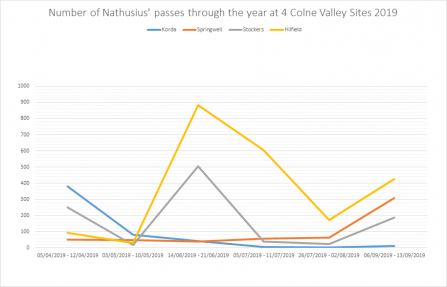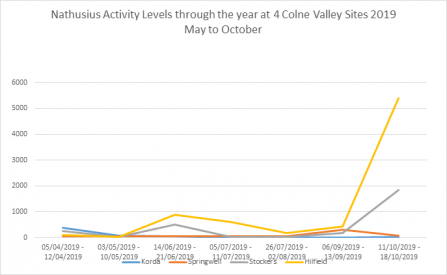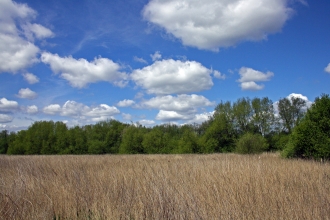A Wetland Vision for Bats
The Trust is working with partners on an ambitious project to learn more about one of the rarest and most poorly understood bats in the British Isles.
The Nathusius’ pipistrelle is a priority species under the Eurobats agreement with very few maternity roosts having been recorded in the UK. As well as being regularly detected by acoustic monitoring devices, in 2017 two ringed bats were captured at Colne Valley waterbodies that were originally ringed in Latvia. To put this into perspective, only 7 continentally ringed Nathusius’s pipistrelle have ever been recovered in the UK.

Pipistrelle bat © Amy Lewis
The new project, made possible by support from the High Speed 2 additional mitigation funding, aims to monitor and improve the population of Nathusius’ pipistrelle in the Colne Valley. This will include detailed monitoring of the bats through dedicated monitoring stations, radio tracking and remote acoustic monitoring. The Trust will also help to train volunteers to help with ongoing monitoring of Nathusius’s pipistrelle populations. Data produced from this project will be shared with site managers, local records centres, the Bat Conservation Trust and International partners to inform our knowledge of the ecology of the species and guide conservation effort.
Focus sites for this project include four of the Trust’s nature reserves - Stocker's Lake, Springwell Lake, Hilfield Park Reservoir, and Broadwater Lake. At these sites, bat box schemes are implemented to facilitate passive capture, ringing, recapture, stable isotope analysis, and provide secure and stable mating and maternity roosting opportunities. Beyond these nature reserves, the Trust also works with local landowners to improve foraging habitats for bats and provide key landscape features such as hedgerows.
This exciting project not only benefits Nathusius’ pipistrelle but will also be of great value to the other 11 species that have been recorded in the area.
The project is supported by the HS2 Colne Valley Regional Park Panel.
Update - October 2019
- A team of 18 volunteers conducted 16 bat box checks across the four sites
- Remote detectors were deployed every month through the active period to see if significant differences in activity levels could be detected (see graphs below)
- 20 trapping events were organised involving 34 volunteers, in which large numbers of different bat species were caught. The Nathusius’ were ringed so that should they be trapped again, either here or elsewhere, we know where they came from and how far they have travelled.
- These resulted in a comprehensive species overview for all four sites including Nathusius' pipistrelle, Daubenton's, noctule, common as well as soprano pipistrelle, brown long-eared, Natterer's and Leisler's bats.

This graph shows Nathusius' activity measured by the remote detectors. Based on our current understanding of Nathusius’ behaviour in the UK, the graph was expected to show activity peaks in spring and autumn which would correspond with mating behaviour and migration. The significant peaks of activity in summer at Hilfield and Stocker's Lake could indicate potential maternity activity.

The activity levels skyrocketed in October, dwarfing the previously recorded numbers, and could be a sign for migration and/or mating activity.
Find out how we catch and tag bats in the video below.
Update - August 2018
- A large volunteer team has been recruited and will be assisting in trapping, installing maternity boxes and erecting 135 bat boxes.
- One trapping survey has been carried out at Broadwater Lake, with two adult Nathusius's caught and ringed.
- A full suite of surveys is planned for late summer and autumn where harp traps, mist nets, radio tracking receivers, radio tags, remote detectors, bat rings, sonic lures and supporting equipment will be used.
- Remote detectors have been deployed across all four sites and show good levels of Nathusius' activity at each one. Stockers Lake recorded the highest number of Nathusius' contacts with 161 in one night. In addition to Nathusius pipistrelle, the detectors have also picked up a lot of activity from noctule, Leisler’s, serotine, Daubenton’s, common pipistrelle, soprano pipistrelle and myotis species.
- 12 maternity boxes have been created and are currently being assembled by a skilled volunteer.



